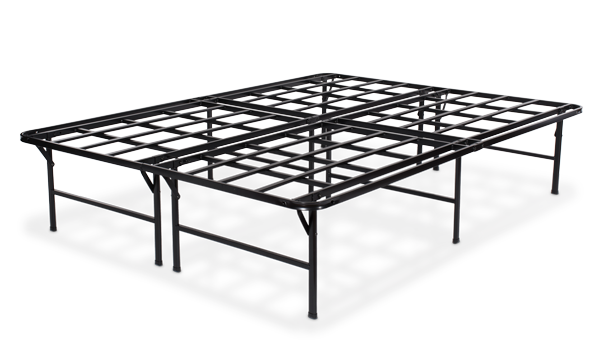What are Bed Slats?
Before diving into the intricate details, it's essential to understand what we mean by 'bed slats.' Simply put, bed slats are flat, thin pieces of material (usually wood, but can also be metal or plastic) that form the base support structure of a bed frame. Positioned horizontally across the frame, they create a sturdy platform for your mattress.
What Do Slats Do for a Bed?
Bed slats provide the necessary support for your mattress, aiding in both its longevity and comfort. They help distribute your weight evenly across the bed, reducing pressure on any single point on your mattress. This not only prolongs the life of your mattress but also ensures a more comfortable sleep.
How to Keep Bed Slats in Place?
There are a few methods to keep bed slats from slipping or moving. One popular method involves attaching Velcro strips or non-slip tape to the bed frame where the slats rest. Another way involves securing the slats with screws or brackets, but this requires a bit more effort and may not be suitable for all bed frames.
How Thick Should Bed Slats Be?
The thickness of your bed slats will depend on your bed size and weight requirements. However, as a general rule, slats should be around 0.75 to 1 inch thick. This ensures they're sturdy enough to support the mattress and the weight of the sleepers without bending or breaking.
How Wide Should Bed Slats Be?
Similarly, the width of bed slats typically ranges from 2 to 3 inches. Wider slats offer better support and are less likely to crack under pressure. However, the spacing between the slats is also crucial; a gap of 1.5 to 3 inches is considered optimal to allow for proper airflow and support.
How to Cover Bed Slats?
Covering bed slats can be as simple as draping a piece of cloth or canvas over them before placing the mattress. This can help prevent the mattress from sagging into the gaps between slats. Some people also use a bunkie board or a thin layer of plywood to provide a more even surface.
How to Measure Bed Slats?
To measure bed slats, you'll need to know the width, thickness, and length. Start by measuring the inside width of the bed frame, then subtract about 1/8 inch to allow the slats to fit easily. Measure the length from the head to the foot of the bed frame, and for thickness, refer to the recommendations above.
Which Way Do Slats Go on a Bed?
Bed slats should always be placed flat side up and curved edge down if you have curved slats. This arrangement provides optimal support and allows for some flex in the slats, conforming to your body's weight.
What are Bed Slats Used For?
As mentioned earlier, bed slats are the unsung heroes of your bed frame, offering support and enhancing the lifespan of your mattress. They also help with ventilation, reducing the risk of mold and mildew accumulation, which can degrade your mattress over time.
Interested in how Puffy stacks up against other brands? Check out our mattress comparisons: Puffy vs Purple, Puffy vs Nectar, Puffy vs Casper, Puffy vs Leesa, Puffy vs Saatva, and Puffy vs DreamCloud.
Best Bed Slats
Selecting the best bed slats will depend on your specific needs, bed frame size, and the type of mattress you have. Look for slats made of durable material, like solid wood or high-quality metal, and ensure they fit your bed frame correctly. Consider the spacing between slats, and remember that too much gap can lead to sagging or insufficient support.
Different Types of Bed Slats
There are primarily two types of bed slats: flat and sprung (curved). Flat slats are the more traditional and common variety, typically made of a solid material like wood or metal. They provide a stable, firm base for your mattress. On the other hand, sprung slats are curved, offering a more responsive and flexible support base. They are designed to adjust and respond better to your body's weight and movement, making for a more comfortable sleeping surface. Additionally, some slats come in an adjustable or 'universal' format, designed to fit any size of bed frame for maximum versatility. The choice between these types will ultimately depend on your personal comfort preferences and the specific requirements of your mattress.
Check out Puffy mattress reviews from real customers and see how we compare with other brands.
Curved Bed Slats
Curved bed slats, often known as sprung slats, offer a unique advantage over their flat counterparts. Their arched design offers a slight bounce, creating a more responsive feel. This type of slat can also adjust better to your body's weight and movement, offering improved comfort and support.
Universal Bed Slats
Universal bed slats are designed to fit any bed frame, making them an ideal choice if you're in a pinch. They're typically adjustable and easy to install. However, always ensure to verify their quality and durability, as some 'one-size-fits-all' solutions might not live up to expectations.
Conclusion
In conclusion, understanding your bed slats is vital to maximizing your comfort and enhancing your mattress's longevity. These simple pieces of material play a pivotal role in your bed setup, providing the support that your mattress needs to offer you a restful night's sleep.
Use our store locator to find the closest furniture or mattress store near you and feel the cloudlike comfort of our Puffy Mattress in person.
From their function and measurements to the different types available, this guide has equipped you with the knowledge you need to make informed decisions regarding your bed slats. Remember, the secret to a good night's sleep might just lie in the slats underneath your mattress.

- Supports up to 1,000 lbs.
- Easy assembly.
- Lifetime warranty.
- 101-night sleep trial.
- Free shipping and returns.












